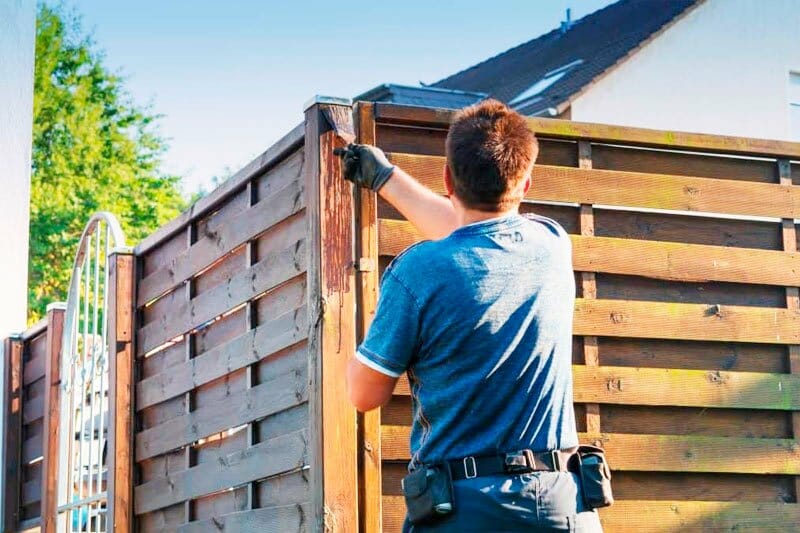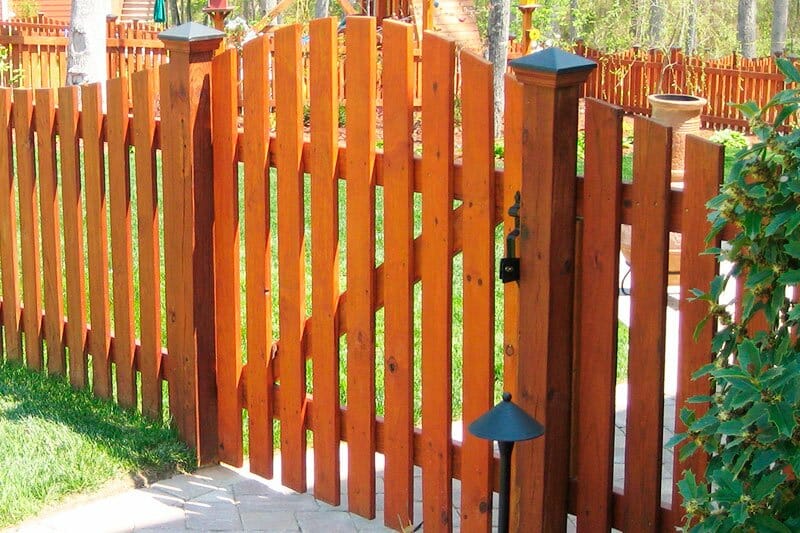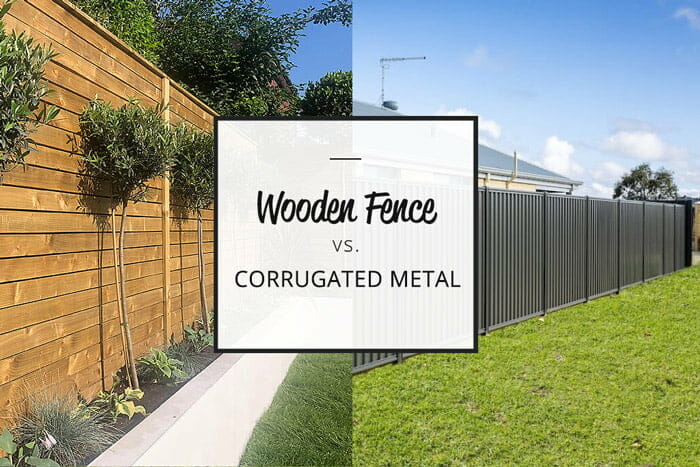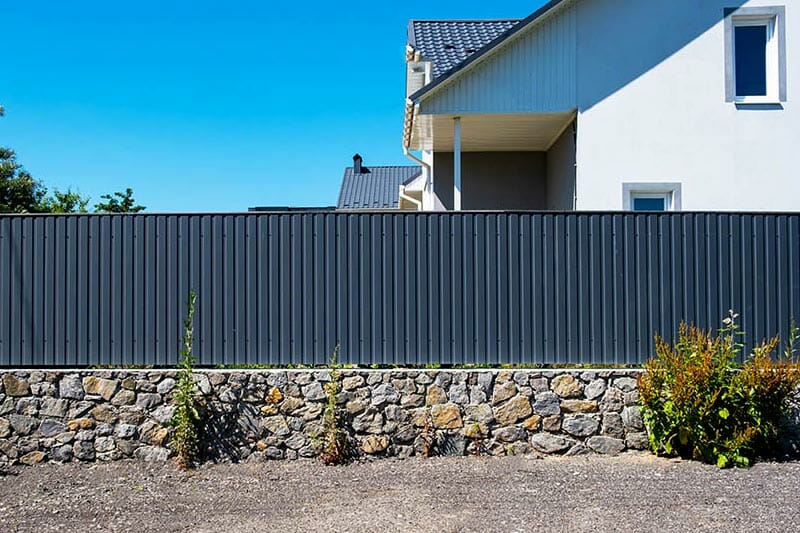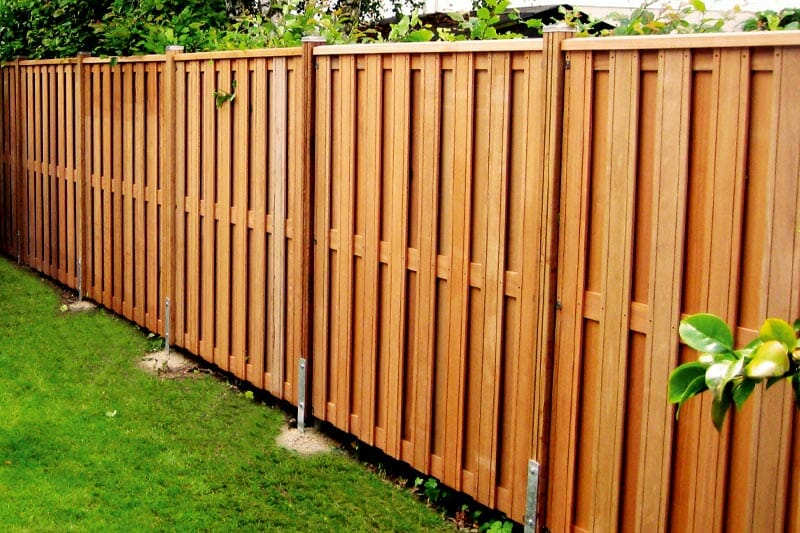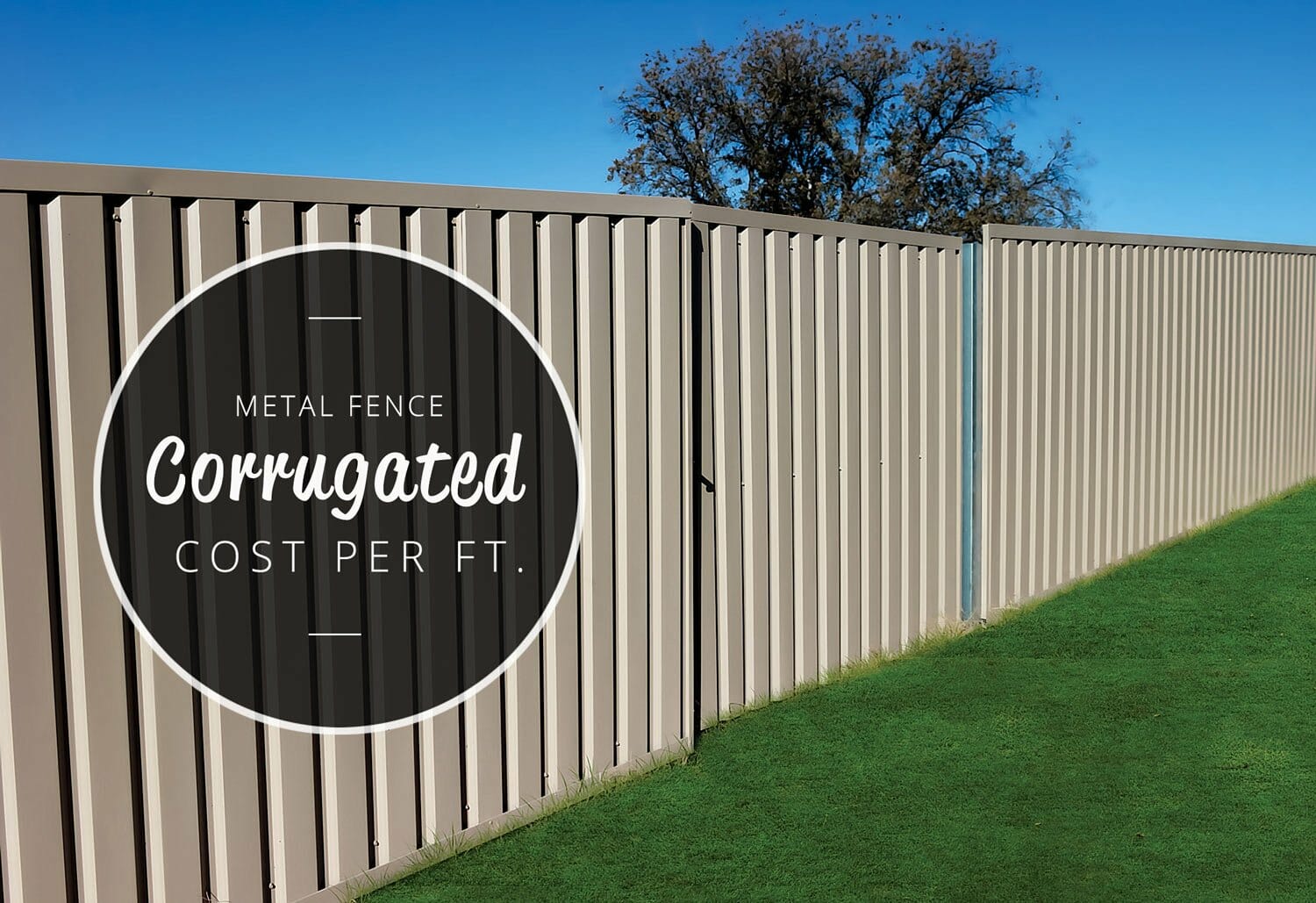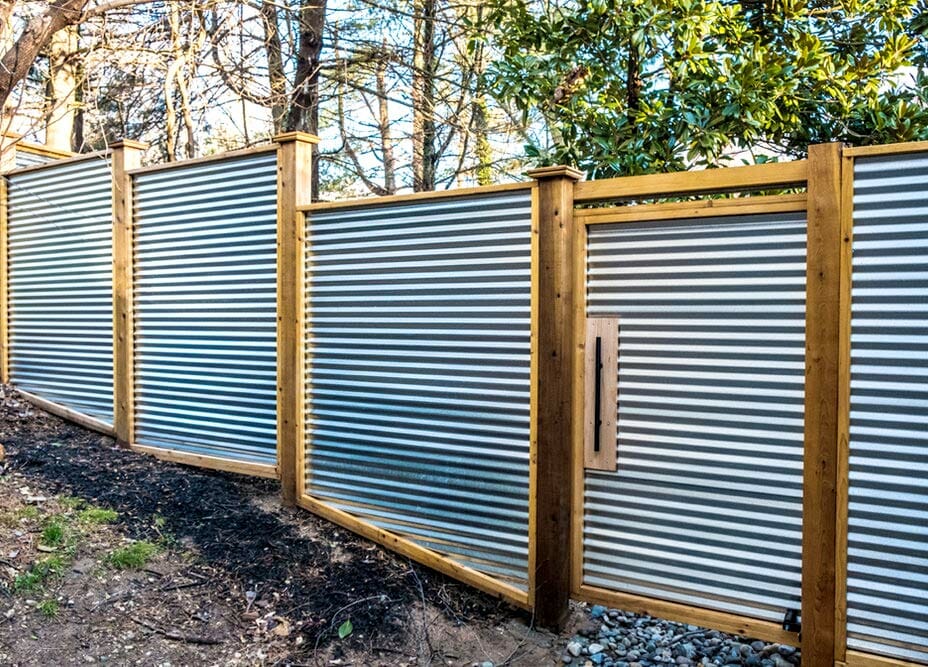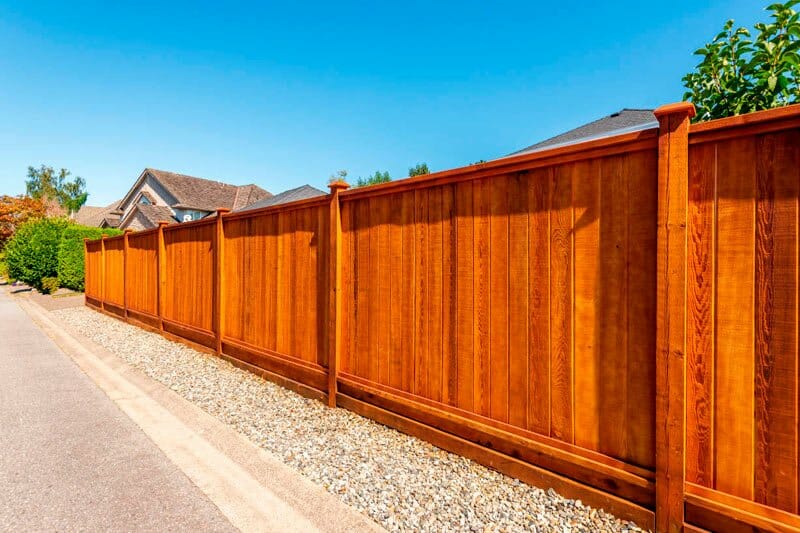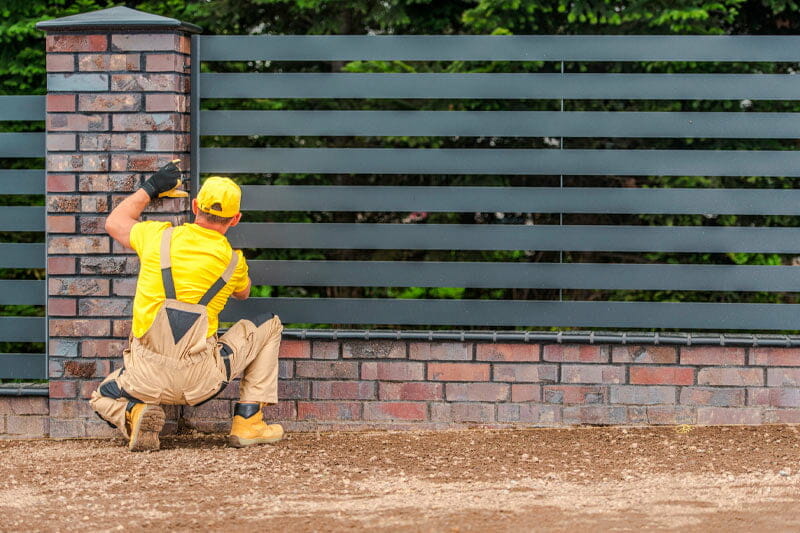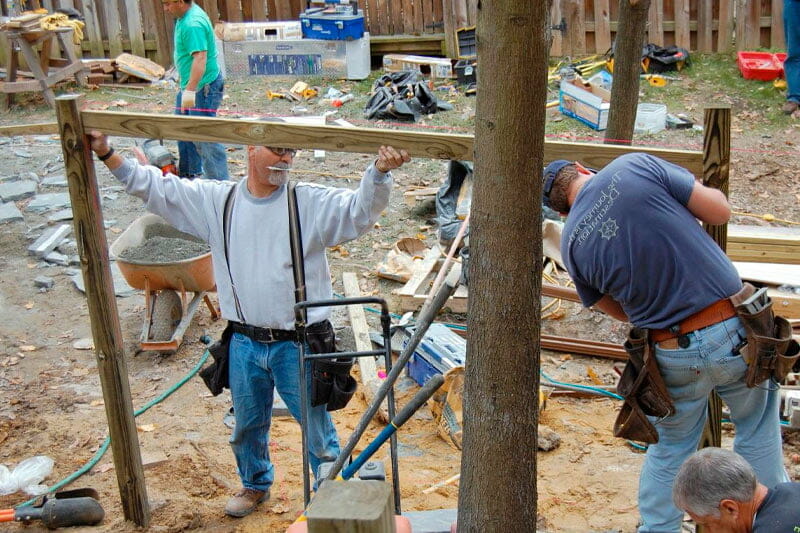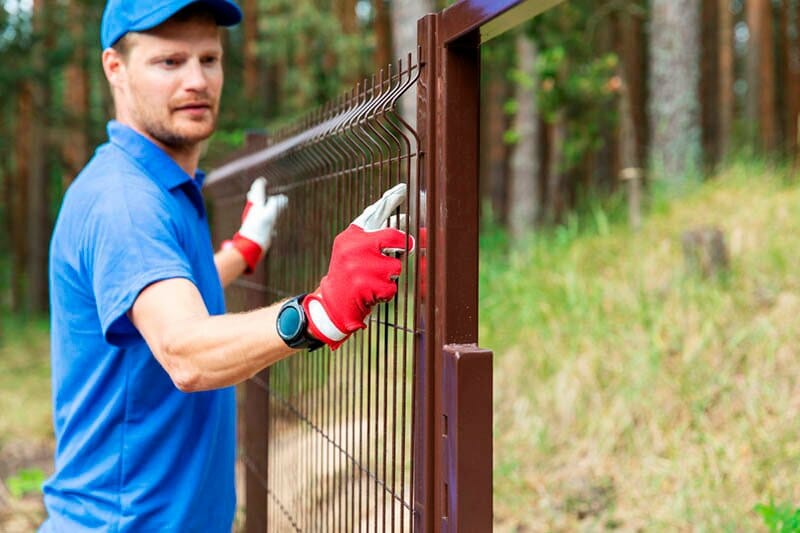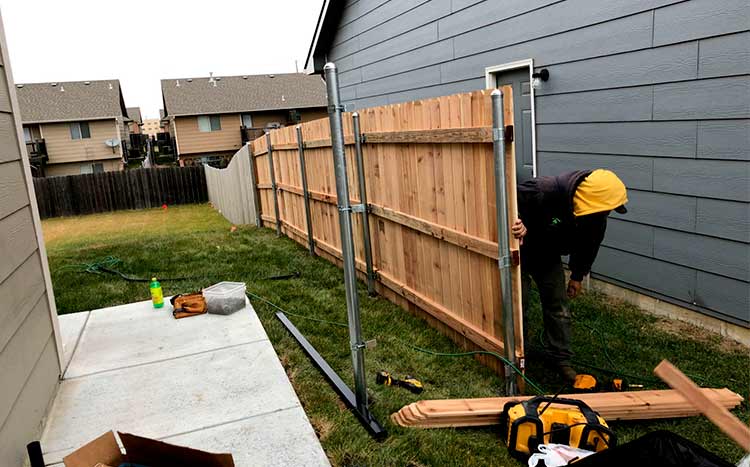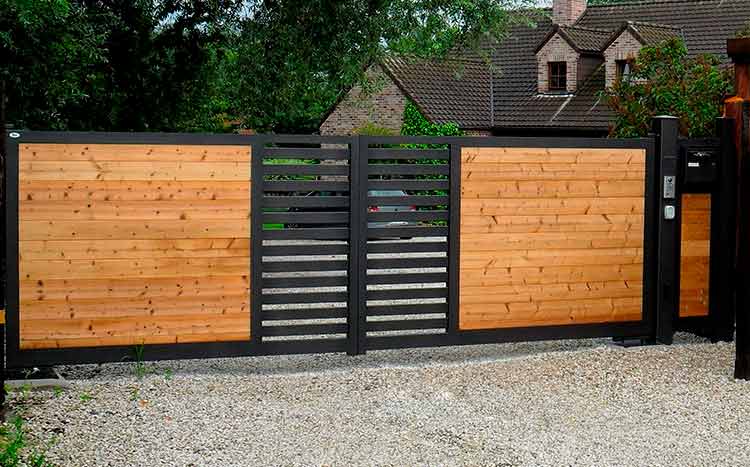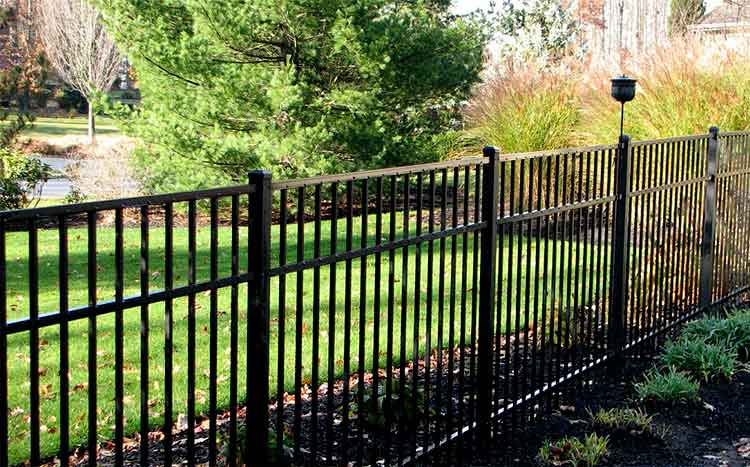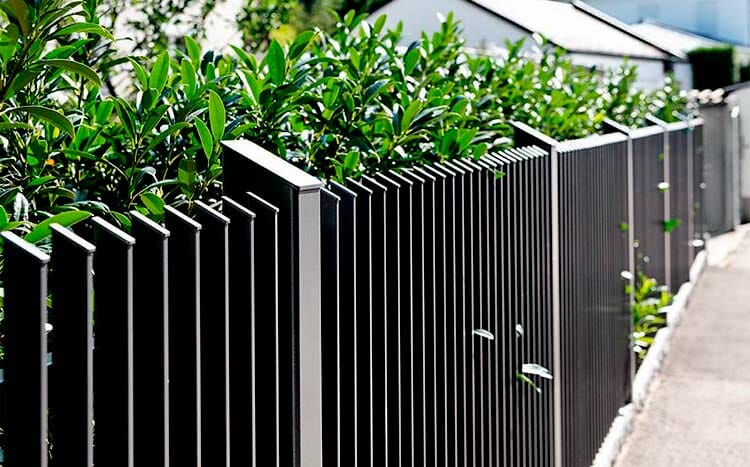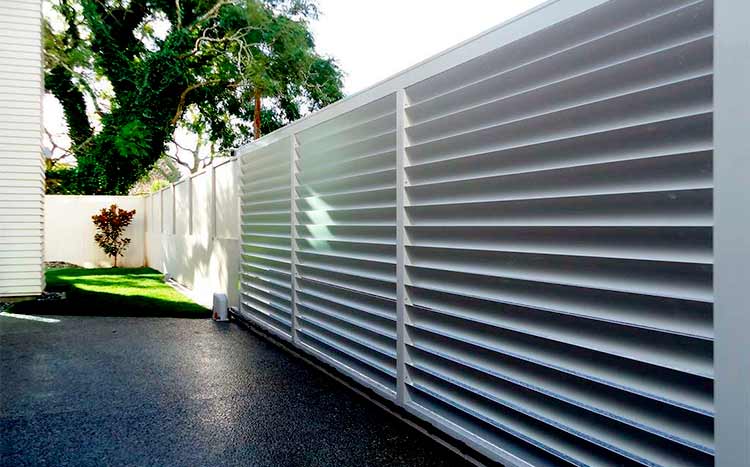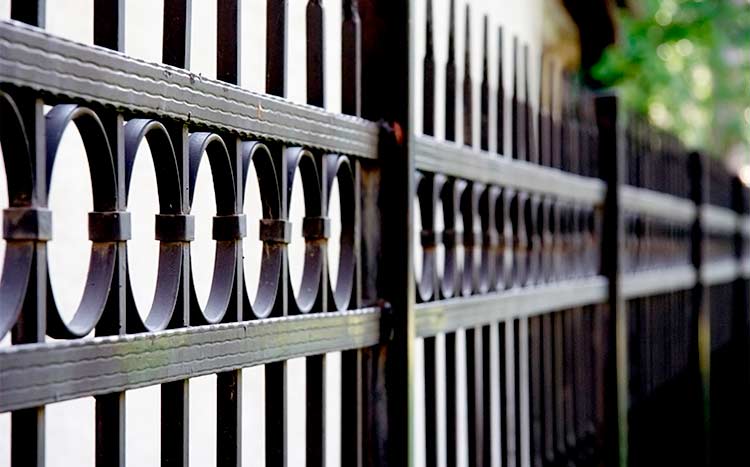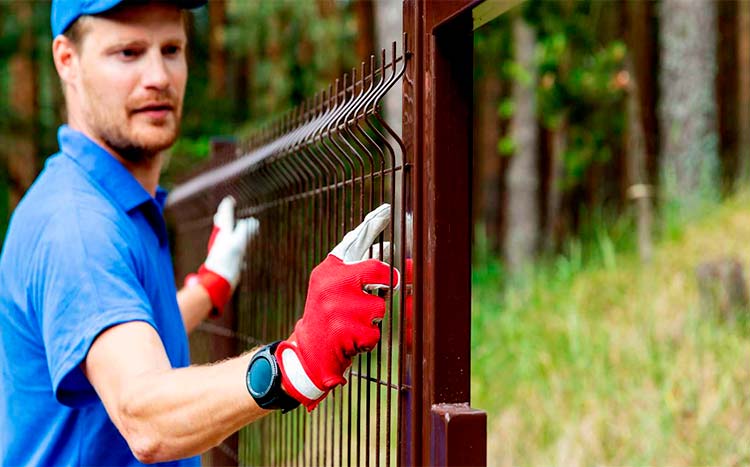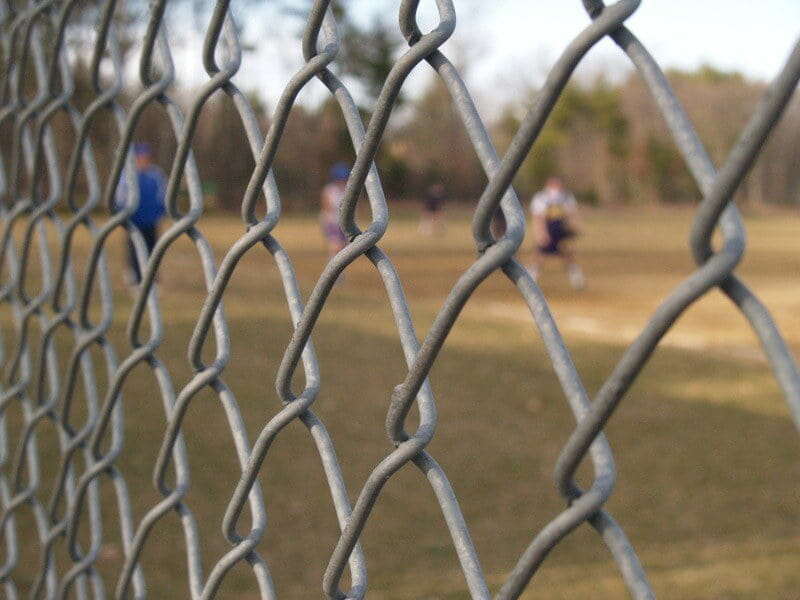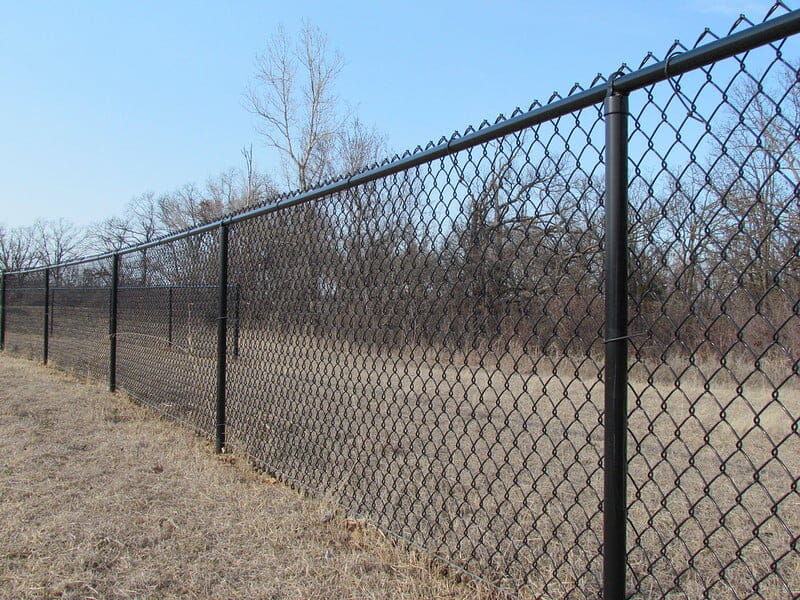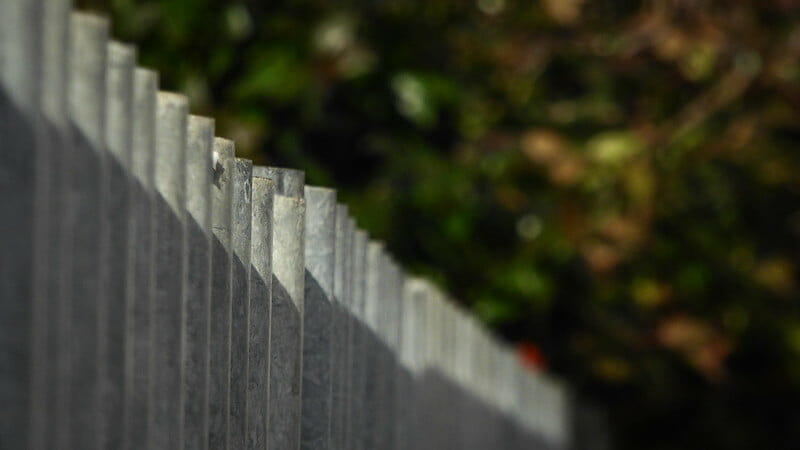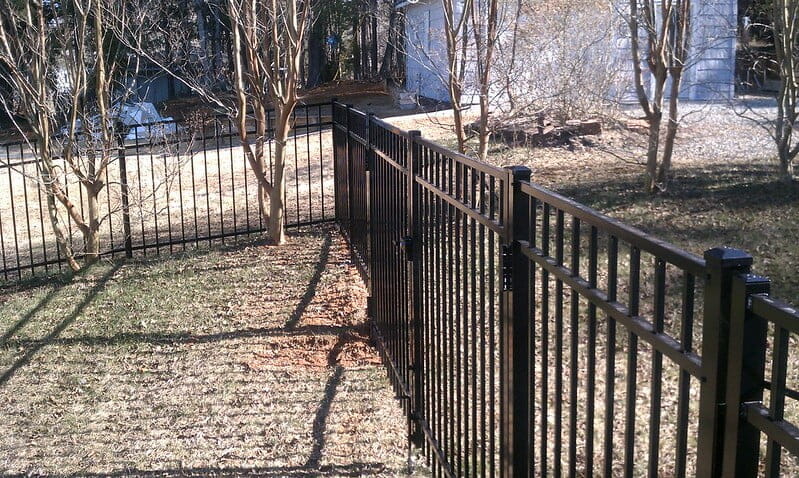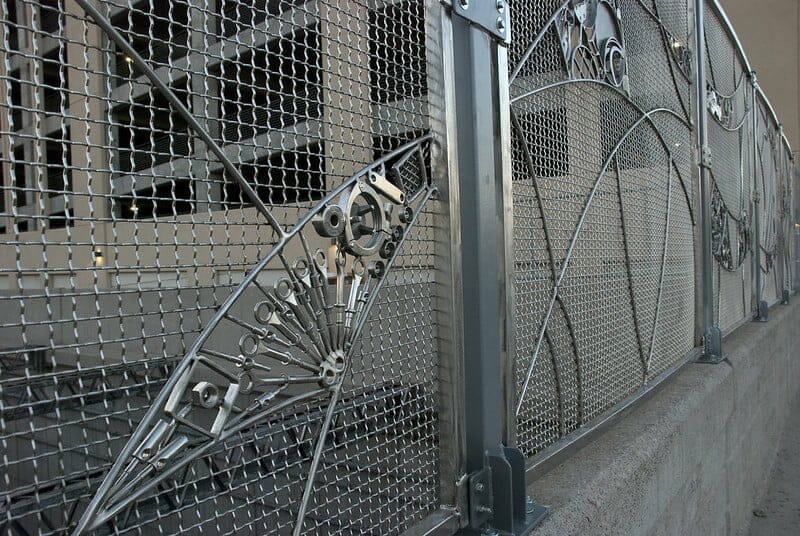If you are looking for a unique type of fence lighter than wrought iron, with a striking appearance, and offers more privacy than the chain-link fence, the corrugated metal fence is an excellent affordable option.
A corrugated metal fence can be paired with brick, steel, wood, wire, concrete wall, or border plants to give a perfect fence. Alternatively, you can paint the fence, use modern white theme paint, shorten it, make an outdoor bathroom, use it for your front yard, on sloped land, or customize it to achieve a rustic theme.
Corrugated Metal and Brick Fence
If you want a rustic style, pair your corrugated metal fence with the red brick. When paired with red brick, the corrugated metal fence looks strong or sturdier and well-built. When corrugated metal fences are topped with red bricks or stones, it creates an imposing design that deters criminals ad vandals from breaking into your property.

Corrugated Metal Fence and Colorful Concrete Wall Fence
Get rid of the monotonous and regular look of the corrugated metal fence by pairing it with a colored concrete fence. Adding a splash of color to your concrete wall gives your fence a striking appearance.
You can also be experimental and instead of having one color on the wall, try painting any print or art of your choice. My personal favorite is a floral print. This combination gives your fence a whole new elegant look while still maintaining the aesthetics of your home.

Corrugated Metal Fence and Timber Fencing
Pairing the corrugated metal fence with pallets is a cost-friendly alternative to fencing your property line. As we all know, pallets are easy to DIY, or you can purchase them as second-hand items so that the cost will remain low.
This fence design gets even better because you can use different pallet designs and colors to create any design that you want.
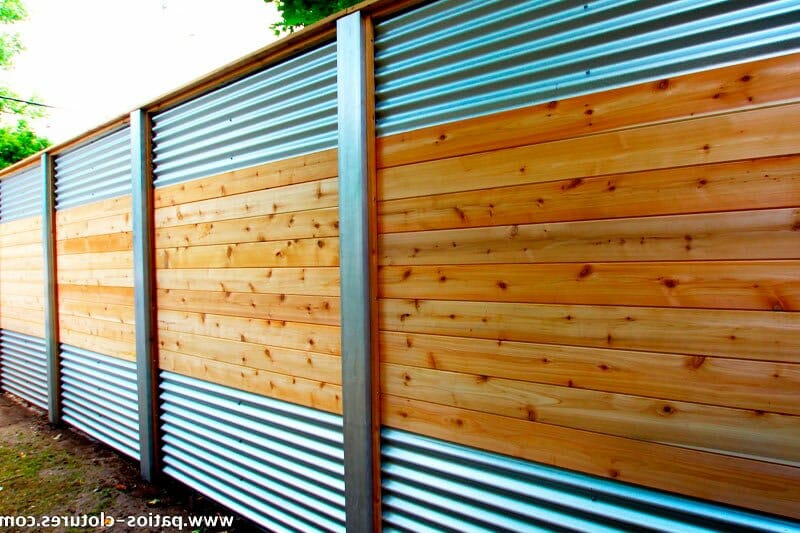
Corrugated Metal Fence with Wood Frame
Add a bit of uniqueness to your corrugated metal fence by adding a wooden frame to the fence. The wood frame will help accentuate and define the metal design more. In addition, you can use different types of wood to add to the depth and color of your fence.
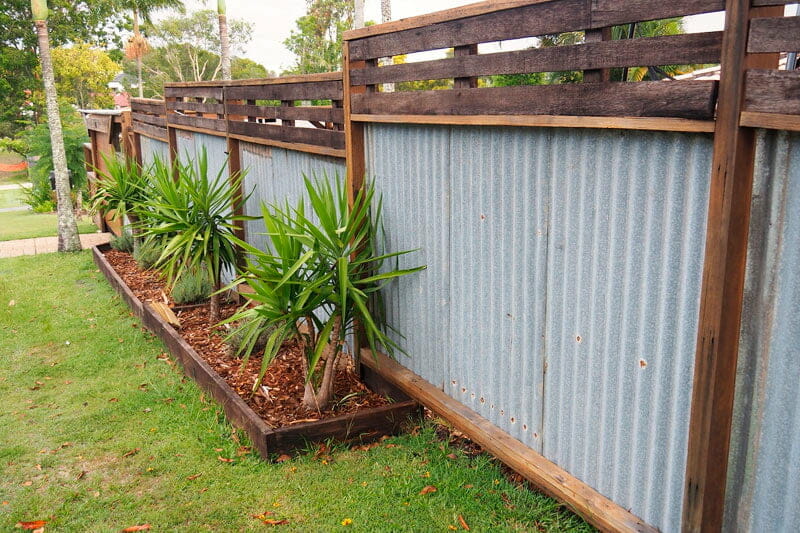
Modern White Corrugated Metal Fence
Adding modern themes such as a white rectangular wood frame to your corrugated fence easily enables you to achieve a contemporary theme. White has a characteristic ultra-modern tone that easily matches any hues.

Rustic Corrugated Metal Fencing
To make the corrugated metal fence more durable, it comes with anti-rust protection that can withstand any outdoor weather. You could decide to forgo the anti-rust protection, allowing the metal sheets to rust and take on an appealing rusty design. Rocky landscaping around this type of fence could add to the rusticness of your exterior.

Corrugated Metal and Steel
To achieve a bold, attractive industrial fence design, pair the corrugated metal fence with steel. This design is very versatile since the panels can be arranged both vertically and horizontally. You can also decorate the fence by planting plants that will not mess up with the industrial look of the fence, such as bamboo.
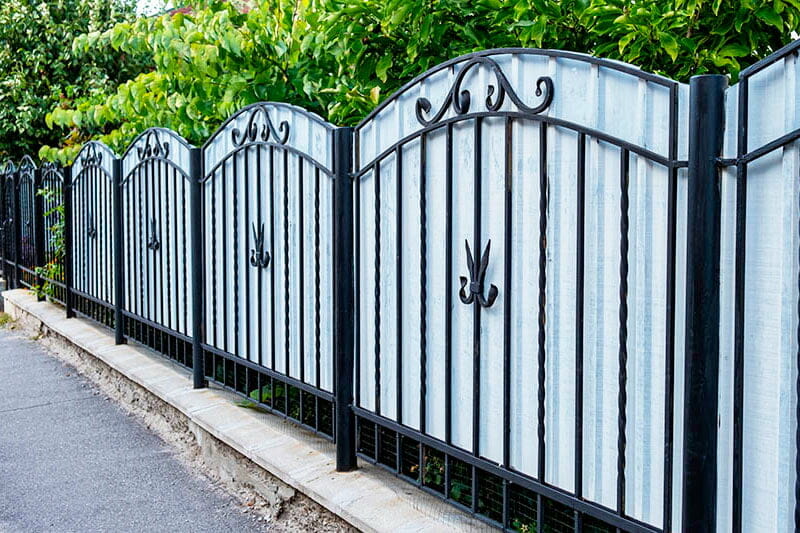
Painted Corrugated Metal Panel
Painting your corrugated metal fence not only serves as a perfect backdrop for your backyard it also helps maintain the color theme of the house if your paint the fence with coordinating colors to your home.
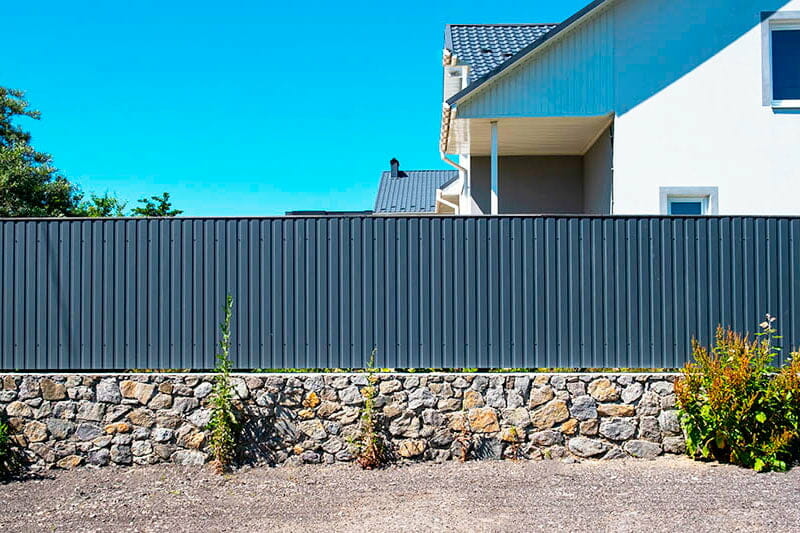
Corrugated Metal Fence with Border Plants
Pairing your fence with border plants helps eliminate the dull look that a corrugated metal fence may sometimes have, ensuring it looks natural. You can choose from the lemon ball to the stonecrop, among many other border plants. The combination creates an earthy rustic design and a refreshing atmosphere.

Corrugated Metal Fencing for Outdoor bathroom
You can be creative and use it to fence an outdoor shower. This shower fencing can be useful for housing outdoor showers used before and after swimming in the backyard or house garden tubs and jacuzzis. Using corrugated metal in this way helps you create something unique and functional.
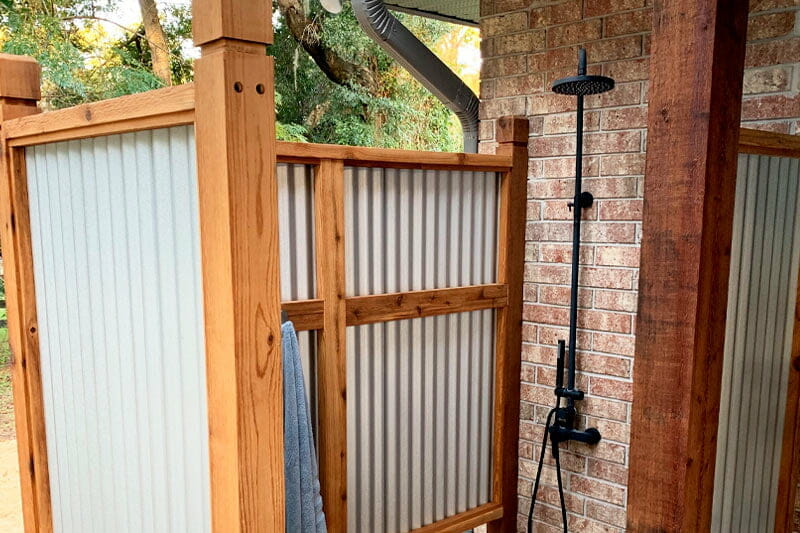
A half-acre plot is about 420 linear feet around the perimeter. Most urban homes are built on ¼ or ⅛ acre plots. Fencing a half-acre plot will be more expensive than fencing around your home.
Depending on your chosen fence materials, you will pay $1 to $40 per linear foot. On average, you will pay about $6,000 to fence ½ an acre. Barbed wire is the cheapest fence material for large pieces of land.
Whether you hire a pro or install the fence, DIY will also influence how much you pay.
| Material | Cost Per Linear Foot | Cost Per Half-Acre |
|---|---|---|
| Vinyl | $10 | $4,200 |
| Chain link | $15 | $6,300 |
| Barbed wire | $3 | $1,200 |
| Split Rail | $20 | $8,400 |
| Wood | $30 | $12,000 |
| Corrugated Metal | $30 | $12,000 |
| High Tensile Wire | $3 per strand | $ 2,000 |
Materials To Use For ½ Acre Plot
Vinyl
Vinyl fencing is a suitable and affordable option for a half-acre plot. Installing a vinyl fence costs $10 to $40 per linear foot, depending on the style and quality of the fencing material. You can expect to pay $5,000 to install a vinyl fence on average.
Vinyl fencing is strong and sturdy. It is easy to install, and you can fix it independently if you have the right tools and skills. It is durable and requires little to no maintenance over its lifetime. Its cost-effectiveness saves you money, and you don’t have to worry about your fence once it is installed.
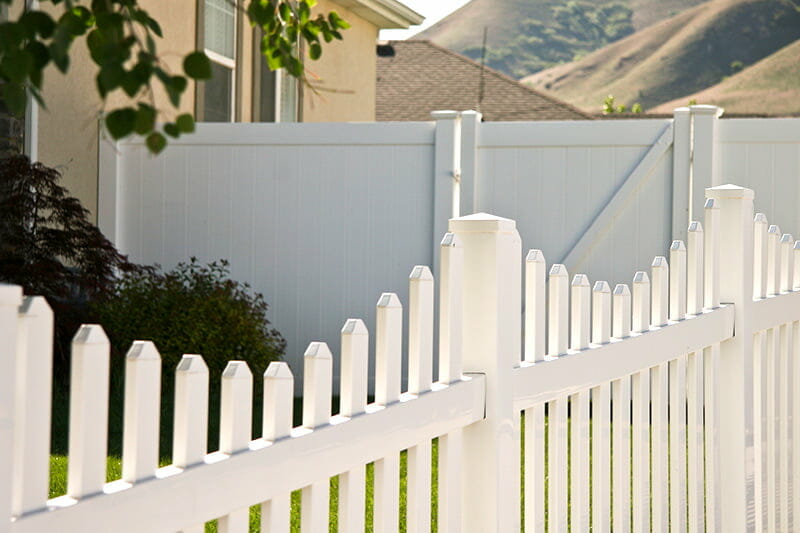
Chain Link
Chain link fencing is affordable for a half-acre plot. For materials, chain link fence costs $5 to $10 per linear foot. How much you spend on chain link fence materials depends on the strength of the wire. You will pay more for a higher gauge and stronger chain link fence. Installation costs $10 to $20 per linear foot.
You can expect to pay $6,300 to fence a half-acre plot with a chain link. Chain link fencing is strong and durable. It requires little to no maintenance; all you need is the posts and the chain-link wire.
However, it provides little privacy, as you can see through the gaps in the wire.
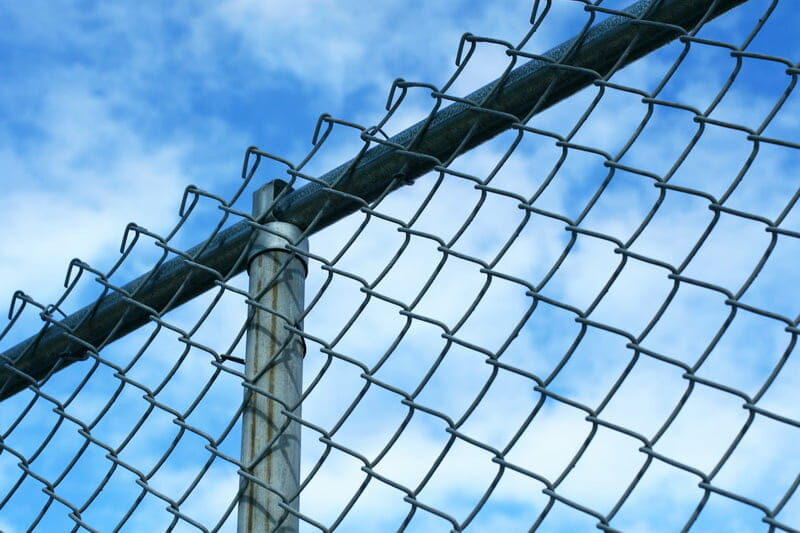
Barbed Wire
Barbed is the most affordable fencing option available. Considering the size of a half-acre plot, barbed wire is a suitable fencing material.
Materials and installation costs for a barbed wire fence cost $3. You can expect to pay $1,200 to fence a half-acre plot with barbed wire.
It is a suitable farm-land fence. It helps to mark boundaries and to keep your animals from straying. It is a poor privacy fence, as you can see through it easily.
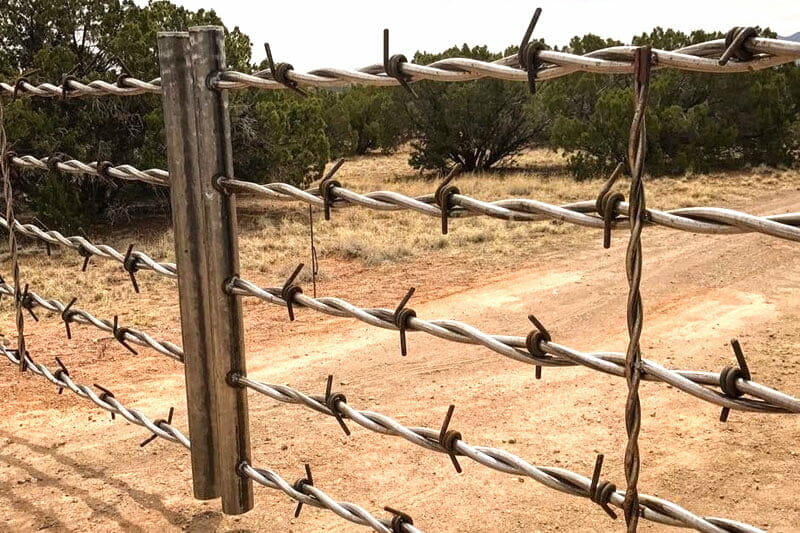
Split Rail
A split rail fence is also a suitable option for a half-acre plot. A split rail fence will cost you $11 to $20 per linear foot, depending on your fencing material. You can use wood or pre-assembled vinyl posts.
You can expect to pay up to $8,400 to fence a half-acre plot with a split rail fence. It is easy to install and long-lasting.
If you choose a wood split rail fence, you must maintain it regularly. Proper maintenance for a wood fence requires regular Inspection for rot and decay, painting or staining, and fixing any broken parts.
Materials such as vinyl need little maintenance.
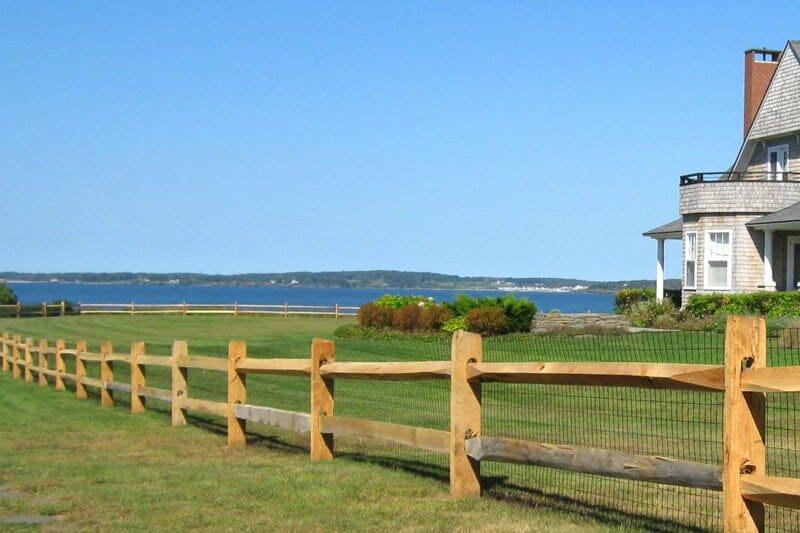
Wood Fence
Wood fences cost $18 to $40 per linear foot for materials and installation. How much you pay for a wood fence depends on the type of wood you choose. Pine is the cheapest wood fence, while cedar and redwood fences cost much more.
You can expect to pay an average price of $12,000 to install a wood fence on a half-acre plot.
Wood fences need proper care and looking after. When buying a pine fence, make sure it is chemically treated. The treatment makes the wood change color. It also makes it resistant to pests, rots, and decay.
Redwood doesn’t need to be treated as it is already pest resistant and has a natural red hue that makes the fence attractive.
However, you must keep your wood fences from touching the ground to prevent rot and decay. Maintain and take care of your wood fences to prolong their lifespan.
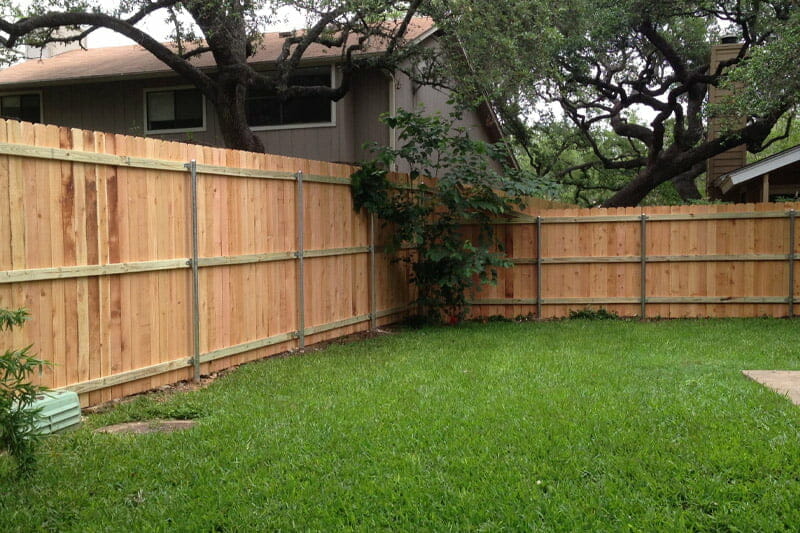
Corrugated Metal Fence
A corrugated metal fence is an option for your half-acre plot. It is strong and sturdy, provides privacy, and is long-lasting. Corrugated metal fences come in panels of different materials such as aluminum or other metals, measuring 6 or 8 feet each for easy installation.
Corrugated metal fences cost $17 to $90 for materials and installation. It will cost you about $12,000 to fence a half-acre plot with corrugated metal. How much you pay depends on the type of corrugated metal panels you choose and the size of the panels you buy.
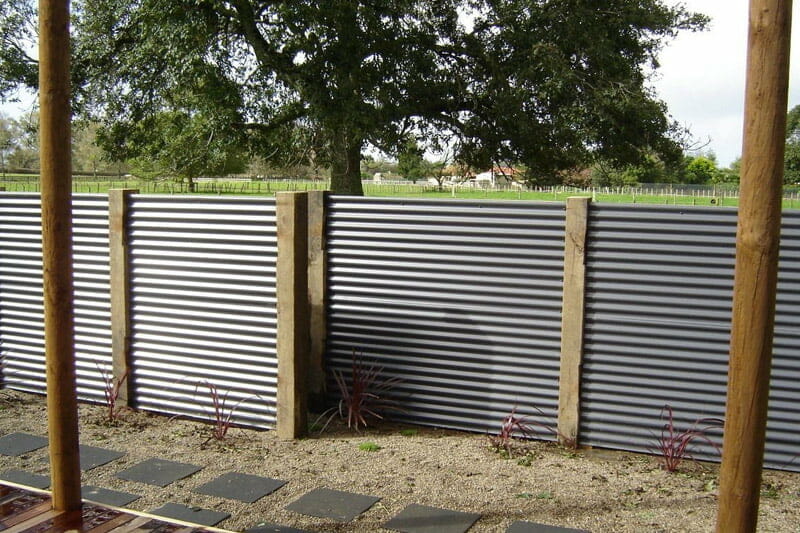
High Tensile Wire
The high tensile non-electric wire consists of 8 strands of 12.5 gauge wire and posts. It is a suitable and affordable fence for a half-acre plot. High tensile wire fences cost $0.07 to $1 per foot for materials and installation. Fencing a half-acre plot with non-electric high tensile wire will cost you about $2,000 to $3,300.
A high tensile wire fence is strong and durable. It is a low-cost and low-maintenance fence.
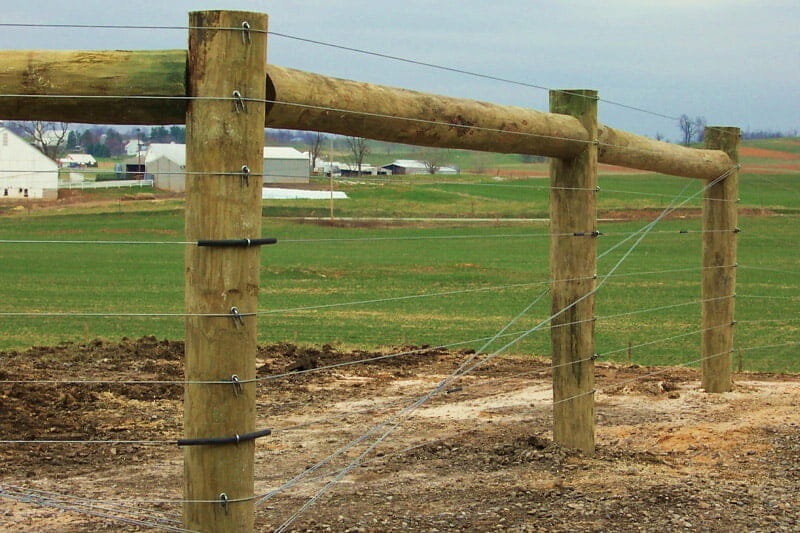
Use This Free Service
Go to homegardenguides.com. At the top of the page, enter your location zip code.
After that, fill in the form that follows. You will provide more details on the fencing project at hand. For instance, you will provide the size of the land, the slope, and how it is used. Then submit the filled form.
Afterward, you will receive quotes and advice from three professional fence installers. Compare the prices offered and pick one that will work within your budget.
Depending on the materials you choose, fencing is an easy DIY project. It will save you the cost of installation after you have purchased materials.
However, using a pro is much better. How much they charge you includes the tools you may have to buy or hire if you DIY. Being professionals, they will do a much better job than you can.
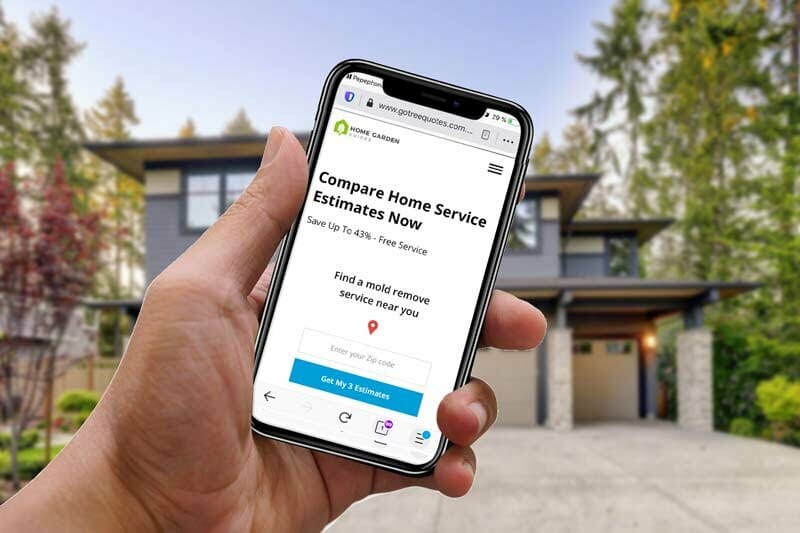
FAQ’s
A fence is an essential part of any plot of land that you own. You must fence your plot to identify the boundaries easily. If you don’t fence your land, it can be easily encroached on by your neighbors and others.
A fence also provides privacy. Depending on the materials you use, a fence can easily block outsiders from viewing whatever is going on in your land. Also, you cannot see beyond the fence.
If you have agricultural land with animals on it, a fence is essential. It ensures that your animals don’t leave your land. Keeping your animals from your neighbor’s land keeps your animals safe and protects your neighbor’s land from destruction.
Some fence materials make attractive fences. Attractive fences increase the value of your land.
How Do I Decide On The Type Of Fence To Install On My Half-Acre
There are many types of fences you can install on your land. The type of fence you install depends on several factors. The size of your land is a major factor in the type of fence you will install. The larger your land is, the more expensive it is to fence it.
The other factor to consider when fencing land is the cost of fencing materials. The cost of fencing materials ranges from highly affordable to expensive. Buy fencing materials depending on your budget.
How you use your land is another factor to consider when installing a fence. If you are fencing around your home, you will use different types of fence materials from when you are fencing around agricultural land.
Do I Need A Permit To Install A Fence
Depending on where you live, you need to find out from your local authorities whether you need a permit to install a fence. You can visit the local authority office or hire a pro fence installer to advise you.
Where you need a permit, you will have to pay for it. Find out how much you will pay for the permit and add the cost to your fence installation cost.
Depending on where you live, you will pay about $20 to $60 for a fencing permit.
How Can I Save Money On Fencing
Fencing is an expensive endeavor. However, you can save a significant amount on your fencing project. To save money on your fencing, hire a pro. Pro fence installers have relationships with materials distributors. Buying from your installer can help you save on your installation costs.
Consider the size and use of your property. It will help you to choose the right type of fence. The right fence is cost-effective. Install a fence that requires little to no maintenance. A high-maintenance fence will cost you more over its lifetime.
If you are looking to save on the cost of installing a fence, gather as many price quotes as you can. Talk to more than three pro installers to find out how much they would charge you. Then, pick one who is likely to carry out a high-quality job at a lower cost than the others.
The term sheet metal in fencing refers to any metal panels you can use to create a fence. The most popular sheet metals for fencing are corrugated metal sheets and aluminum panels.
Installing sheet metal fences on your land costs $17 to $90 per foot. How much you pay depends on the type of material you choose and the type of fence you want to install. On average, you can expect to pay $700 to $8,000 for a sheet metal fence.
Let us look more into the cost of sheet metal fences.
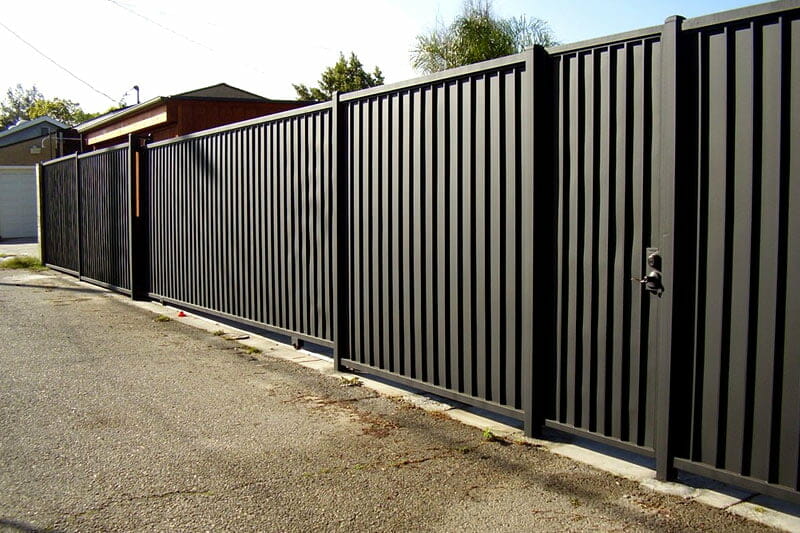
Cost of metal fences by type
The table below shows the average prices for installing metal fences depending on their type.
| Description | Average cost |
|---|---|
| Black aluminum fence | $60 |
| Wrought iron fence | $25 to $35 |
| Steel fence | $30 to $50 |
| Chain link fence | $10 to $30 |
Black aluminum fence
Black aluminum fence panels cost $60 for a 4 by 6-foot panel. It is attractive and easy to install.
Wrought iron fence
Wrought iron fence materials cost about $25 to $35 per linear foot. Depending on the size of your plot, you will pay $2,700 to $5,500.
Cost of installing steel fence
Material costs for a steel fence range from $30 to $50 per linear foot. You can expect to pay from $4,500 to $7,500 for the installation of a steel fence.
A steel fence is durable and will last for up to 100 years. It will require regular sanding and painting for maintenance. It enhances security and is great for a privacy fence.
Cost of installing a chain link fence
A chain-link fence is versatile, easy to install, and can be installed anywhere in your compound.
The average cost of a chain-link fence ranges from $10 to $30 per foot. You will pay from $1,300 to $4,000 for a successful installation of a chain-link fence.
Comparison of sheet metal fences
| Aluminum | Steel | Wrought iron | |
|---|---|---|---|
| Durability | Yes | Yes | Yes |
| Suitable for humid climate | Yes | No | Yes |
| Corrosion-resistant | Yes | May rust | No |
| Maintenance | Little | Requires sanding and painting | Requires painting |
| Strength | Bends and dents easily | Yes | Yes |
| Available in many designs and colors | Yes | Yes | Yes |
| Cost | Affordable | Affordable | Expensive |
Functions of metal sheet fences
- Security
- Aesthetics
- Boundary demarcation
- Keep pets in or out of spaces
- Privacy
- Safety
Cost factors for sheet metal fences
Size of the land
The larger your land, the more it costs to fence it. You need a large number of metal sheets which increases the cost of materials.
Additionally, the size of your land determines how much time is needed to complete fence installation. The larger it is, the longer it takes. Therefore, the more you pay.
Choice of fence materials
The price of the fencing metal sheets varies. For example, aluminum panels cost $50 to $75 per foot, while corrugated metal fences cost $10 to $12 per foot.
The more expensive your fence material the higher the fencing cost.
Type of fence
There are many types of fences you can install. Privacy fences are the most expensive. They are higher than normal fences. Therefore, you will require more linear footage of the sheet metal, which increases the price of the fence.
Permits
Depending on where you live, you may have to apply for a permit to fence your land. Permits increase the cost of fencing.
Consult your local government or pro for more details. The more you pay, for a permit the higher your fencing costs.
DIY or hire a pro
You can DIY or hire a pro for the fence installation. DIY saves you money.
The cost of hiring a pro will vary depending on the materials, condition of the land, and the type of fence you need.
Benefits of using sheet metal fences
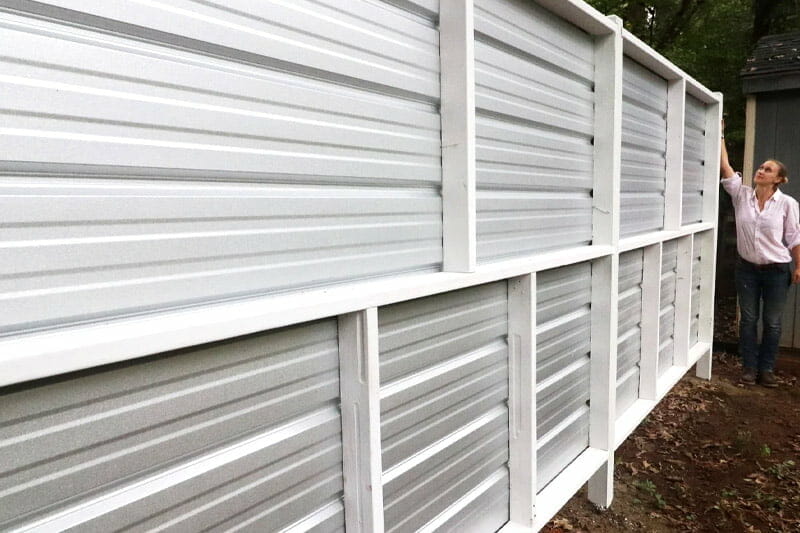
Long lifespan
Sheet metal fences have a long lifespan. They have a useful lifespan of between 25 and 75 years depending on the quality.
If you use cheaper and low-quality metal sheets they may survive for 30 years depending on usage and maintenance.
Minimal maintenance
Sheet metal fences do not need as much attention as other types of fences. Most sheet metals used for fencing are rust and corrosion-resistant.
The most maintenance your sheet metal fence will require is regular cleaning of dirt and dust.
You may also have to paint the fence every 5 to 10 years depending on the quality of the metal sheet and the paint you use.
Ideal investment
With little maintenance, rust and corrosion resistance, and a long lifespan, it is a good investment to use metal sheets for your fencing needs.
Additionally, metal sheets can be recycled and assigned to other uses in the future.
Fast and easy installation
It takes little time and effort to have a metal sheet fence installed properly. You can do it by yourself or hire a professional.
Cost of installing aluminum fence
The average cost to install an aluminum fence is $4,000. You can expect to pay from $2, 000 to $6,000. You will pay $7 to $32 per linear foot for aluminum fencing materials. For labor, the average cost per linear foot to install an aluminum fence is $15 to $40.
DIY vs hiring a professional fence contractor to install a metal fence
Depending on the type of fence you want to install, you can DIY or hire a professional fence contractor.
DIY ensures that you make significant cost savings on fence installation. However, you need to have the right tools or hire them out at a low price.
You also need some knowledge of fence installation and be handy enough to install the sheets firmly.
Depending on the size of your land, you can save up to $1,500 on fence installation costs if you DIY.
Benefits of hiring a pro to install your fence
- Saves you time
- Saves you money since you do not have to hire tools.
- Professionally done.
- There is little room for error. If they do occur, the professional will rectify them at no cost to you.
- They have all the right tools for the job.
How to save money on your fencing project
- Purchase cost-friendly fencing materials.
- Accurate estimates. Ensure you know the exact size of the land you want to fence. It helps you to buy the correct amount of fence materials.
- Choose an affordable style for your fence.
- DIY. .
- You can prepare the land by yourself to save on how much you will pay the professional installers.
- Get three quotes from professional fence installers to find out the right price.
Hire a pro to install your fence
Homegardenguides.com is a free tool to hire professional fence installation service providers.
It connects homeowners to professionals in the following easy steps.
- Enter your zip code at the top of the tool.
- Fill in the form to provide more details about the fence installation service you need.
- You will receive three or four quotes and advice from professional fence installers.
- Contact and hire a service provider that falls within your budget.


